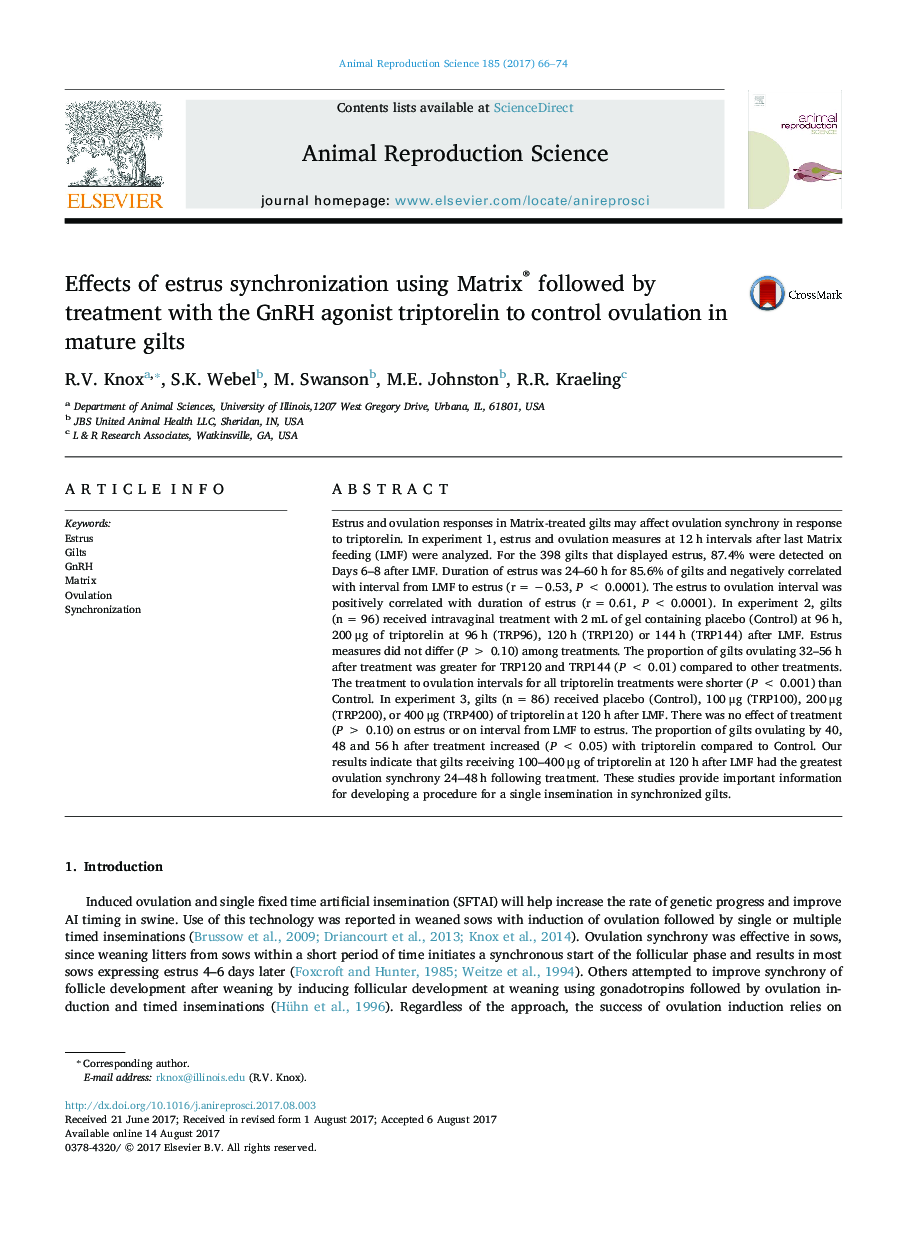| Article ID | Journal | Published Year | Pages | File Type |
|---|---|---|---|---|
| 5520200 | Animal Reproduction Science | 2017 | 9 Pages |
â¢Interval from last feeding of progestogen to estrus in mature gilts is related to time of ovulation.â¢Treatment of progestogen synchronized gilts with triptorelin at 120 h after last feeding of Matrix, increased synchrony of ovulation.â¢Treatment of progestagen synchronized gilts with 100 to 400 mg of triptorelin improved the proportion of gilts ovulating within a 24 h period.
Estrus and ovulation responses in Matrix-treated gilts may affect ovulation synchrony in response to triptorelin. In experiment 1, estrus and ovulation measures at 12 h intervals after last Matrix feeding (LMF) were analyzed. For the 398 gilts that displayed estrus, 87.4% were detected on Days 6-8 after LMF. Duration of estrus was 24-60 h for 85.6% of gilts and negatively correlated with interval from LMF to estrus (r = â0.53, P < 0.0001). The estrus to ovulation interval was positively correlated with duration of estrus (r = 0.61, P < 0.0001). In experiment 2, gilts (n = 96) received intravaginal treatment with 2 mL of gel containing placebo (Control) at 96 h, 200 μg of triptorelin at 96 h (TRP96), 120 h (TRP120) or 144 h (TRP144) after LMF. Estrus measures did not differ (P > 0.10) among treatments. The proportion of gilts ovulating 32-56 h after treatment was greater for TRP120 and TRP144 (P < 0.01) compared to other treatments. The treatment to ovulation intervals for all triptorelin treatments were shorter (P < 0.001) than Control. In experiment 3, gilts (n = 86) received placebo (Control), 100 μg (TRP100), 200 μg (TRP200), or 400 μg (TRP400) of triptorelin at 120 h after LMF. There was no effect of treatment (P > 0.10) on estrus or on interval from LMF to estrus. The proportion of gilts ovulating by 40, 48 and 56 h after treatment increased (P < 0.05) with triptorelin compared to Control. Our results indicate that gilts receiving 100-400 μg of triptorelin at 120 h after LMF had the greatest ovulation synchrony 24-48 h following treatment. These studies provide important information for developing a procedure for a single insemination in synchronized gilts.
